Erica Vetsch's Blog, page 112
June 3, 2019
Cooking with Love, Not Lard: Lessons from Lulu with guest T.I. Lowe

The South is steeped in traditions as rich as chocolate gravy over hot buttermilk biscuits, and we take our traditions just as seriously as our biscuits. An endearing custom of my small town is that we love on you with food. Are you sick? Soup is on the way. Did someone pass away in your family? Make room in your freezer, because an assortment of casseroles will be lining your countertops and any other surface we can find. Having a baby? Yep, more food is on the way.
 In my home, I have a giant sign over the pantry door that says GROCERY. I point to it when guests arrive and then to the fridge, while delivering a sweet yet firm warning that I’ll be offended if they do not make themselves at home. Seriously, a visit doesn’t seem successful if guests leave without eating or drinking something. And do not dare turn a Southerner down when they offer you some food to take home with you!
In my home, I have a giant sign over the pantry door that says GROCERY. I point to it when guests arrive and then to the fridge, while delivering a sweet yet firm warning that I’ll be offended if they do not make themselves at home. Seriously, a visit doesn’t seem successful if guests leave without eating or drinking something. And do not dare turn a Southerner down when they offer you some food to take home with you!Do you even want me to get started about Southern holiday traditions? It’s all centered around the oven, I tell ya. Baked goods galore. We celebrate with food. We mourn with food. We love with food.
Although I think this tradition is charming, it’s given me pause at times. Especially when I sat down to write Lulu’s Café. The “loving on you with food” had to be there, but I decided to explore the possibility of presenting it in a healthier way. I’m sure this is making some of you gasp. Believe me, it wasn’t an easy concept, considering I’ve been raised in the Butter Belt. I’m known for my baked goods and give them out generously as my way of loving on folks.
While coming up with ways for Lulu to use healthier ingredients in her Southern dishes, I also pondered the entire idea of how people show their love to others—food being only one way in an infinite array of possibilities. Although we may all have a different perspective on this, there is one thing we all have in common that we can use to help show our love. We have a limited amount of this and do not know exactly when the supply of it will run out, but I’ve come to view it as one of the greatest gifts we have.
Time. We all have the gift of time.
 The twenty-layer chocolate cake I make on a very rare occasion for my family comes to mind. It’s a giant, super-decadent treat. No way can we eat all of it in one day. There will most likely be leftover cake to enjoy the next day, too. This is not the case with our time. Once a day is gone, it’s gone. There are no leftover hours or minutes or even seconds you can carry over for another slice of time.
The twenty-layer chocolate cake I make on a very rare occasion for my family comes to mind. It’s a giant, super-decadent treat. No way can we eat all of it in one day. There will most likely be leftover cake to enjoy the next day, too. This is not the case with our time. Once a day is gone, it’s gone. There are no leftover hours or minutes or even seconds you can carry over for another slice of time.I often wonder if I’ve loved my family with enough of my time. What will they remember me by when my time limit is up? Did I stop and listen enough? Did we laugh enough? Did I pay enough attention when they had tears in their eyes? Did they know they could depend on me for more than delicious servings of cake?
Lulu made a good point in the book—At the moment, the girl didn’t need to listen. She needed to be heard. If you’ve ever sat down with me over a cup of coffee, then you know I can talk your ear off. However, I also understand what Lulu meant. Listening is a gift. My children have things they need to say, and they need to be heard. Remembering this, I stopped while typing just now to go hang out with them for a little while, giving them the chance to speak. Honestly, I don’t always get this gift of love right. The busyness of life can get in the way, but it’s up to us to be mindful of not allowing it to take over.
Don’t get me wrong, I’m still loving on my family and others with food. It’s a part of my Southern makeup, after all. But when I deliver a casserole or cake to someone, I try to give them a serving of my time to listen as well. Suppertime in the Lowe house is always done together at least five days a week. My crowd is so spoiled—in a good way—that they wrinkle their noses at the idea of take-out most nights, but I don’t mind . . . mostly. I love cooking up nourishing meals, knowing they will enjoy them and it will be much healthier for their bodies. That, in itself, is a gift I love giving.
How about you? What gifts of love do you enjoy sharing with others? Any traditions other than food? And if it’s food, any unique dishes?
Celebrating release day for Lulu's Café!
 When a damaged young woman is given a chance to reclaim her life in a small South Carolina town, she must reckon with the dark secrets she left behind in order to accept the love she deserves.
When a damaged young woman is given a chance to reclaim her life in a small South Carolina town, she must reckon with the dark secrets she left behind in order to accept the love she deserves.On the run from a violent past, Leah Allen arrived in tiny Rivertown, South Carolina, battered and broken, but ready to reinvent herself. By a stroke of fate, Leah is drawn to the Southern hospitality of a small café, looking for a warm meal but finding so much more. Lulu, the owner, offers her a job, a place to stay and a new lease on life. Through Lulu's tenacious warmth and generosity, Leah quickly finds herself embraced by the quaint community as she tries to put herself back together. Given she's accustomed to cruelty, the kindness is overwhelming.
Soon Leah meets Crowley Mason, the most eligible bachelor in town. A lawyer and friend of Lulu's, Crowley is wary of Leah's sudden, mysterious arrival. Despite his reserve, something sparks between them that can't be denied. But after all she's been through, can Leah allow herself to truly love and be loved, especially when her first urge is to run?
Exploring the resiliency of both the heart and the spirit, Lulu's Café gorgeously illustrates how old scars can finally heal no matter how deep they seem.
Lulu's Café is available now!
 Bestselling author T.I. Lowe sees herself as an ordinary country girl who loves to tell extraordinary stories. She knows she's just getting started and has many more stories to tell. A wife and mother and active in her church community, she resides in coastal South Carolina with her family.
Bestselling author T.I. Lowe sees herself as an ordinary country girl who loves to tell extraordinary stories. She knows she's just getting started and has many more stories to tell. A wife and mother and active in her church community, she resides in coastal South Carolina with her family.For a complete list of Lowe's published books, biography, upcoming events, and other information, visit tilowe.com and be sure to check out her blog, COFFEE CUP, while you're there!
Published on June 03, 2019 21:00
June 2, 2019
Writer's Retreat...a lesson in being in a crowd of introverts
I went to a writer's retreat two weekends ago (actually a FIVE DAY RETREAT! But two days were mostly for travel. We arrived at 4:00 (or so) on Saturday and left bright and early Wednesday morning.
In that THREE days and one short fourth days. I wrote 18,500 words!!!!
DID YOU READ THAT?

This is Mary the long-time advocate of writing 1000 words a day.
 Mary, Mom and My CowboyAnd I've been to writer's retreats before that were nowhere near this productive.
Mary, Mom and My CowboyAnd I've been to writer's retreats before that were nowhere near this productive.
So what happened?
And what can someone else do to have such a perfect, successful writer's retreat.
There were eight of us, though one retreater only stayed one day.
It was organized by the lovely and brilliant Dawn Ford.She's on the left, Sharee Stover is on the right in this picture.SHAREE STOVER WHO JUST SIGNED A THREE BOOK CONTRACT WITH LOVE INSPIRED SUSPENCE!!!!!!!!!!!!
And it was an almost perfect dynamic. Yes we talked and laughed and ATE. (Have mercy we ate)
But not really by design, everyone showed up to work. Or enough of us did that those of us who would be been willing to talk and eat MORE, were forced to work.
 What do you mean Erica is working too hard to talk!?
What do you mean Erica is working too hard to talk!?
Raising hand.
First, we all split up. I had the living room to myself.
Another lady set up shop at the dining room table. (I'm not sure who all to name here. I'm bragging on everyone but still, the names might be withheld as to specifics...except ERICA was there and I'll tell every single thing she did!)
Erica was almost always in the bedroom we shared.
This house we VRBO'd was REMOTE. I still keep thinking, 'What is that beautiful house doing out there in the middle of nowhere.'
It is BEAUTIFUL. But so far from anywhere.
Which means, there is NO ESCAPE.
Unless you want to go outside in windy 50 degree weather with spitting rain and look at SHEEP.
Yes, that's right. I was there FIVE DAYS and managed one picture of Dawn and Sharee and about ten pictures of SHEEP.
ON MY SINGLE WALK.

Sit back down there and work.
 There were FIVE bedrooms and a full basement sitting room and kitchen.
There were FIVE bedrooms and a full basement sitting room and kitchen.
The point here is, we could completely be alone. Eight people in one house and no problem at all being in complete silence alone.
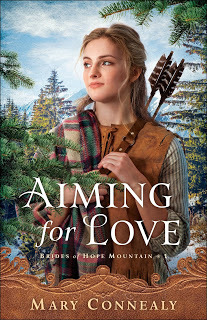 In that picture above, I am in a chair that was MOVED when the website posted this picture. I put a Number 1 on it before I realized that was dumb and started labeling them differently but my skilz are such that I couldn't change the ONE.
In that picture above, I am in a chair that was MOVED when the website posted this picture. I put a Number 1 on it before I realized that was dumb and started labeling them differently but my skilz are such that I couldn't change the ONE.
The hallway with Erica's name on it, leads to a pair of bedrooms. I think there was someone in the other bedroom but I'm not sure. Everyone was so QUIET!
And all of us worked. Long hours of quiet time.
AND IT WAS MISERABLE WEATHER.
We had to stay inside in a very pretty rural setting. Very few walks no matter how good they would have been for us.
(sneaking in a cover of my October release AIMING FOR LOVE. Now available on Amazon.
I've got a cover for book #2, too. It's called WOMAN OF SUNLIGHT. But I am forbidden from sharing it yet. and let me tell you it is taking EVERYTHING IN ME to not post it.)
Josephine Nordegren is one of three sisters who grew up nearly wild in southwestern Colorado. She has the archery skills of Robin Hood and the curiosity of the Little Mermaid, fascinated by but locked away from the forbidden outside world--a world she's been raised to believe killed her parents. When David Warden, a rancher, brings in a herd much too close to the girls' secret home, her older sister especially is frightened, but Jo is too interested to stay away.
David's parents follow soon on his heels, escaping bandits at their ranch. David's father is wounded and needs shelter. Josephine and her sisters have the only cabin on the mountain. Do they risk stepping into the world to help those in need? Or do they remain separated but safe in the peaks of Hope Mountain?
 Did I mention I took pictures of sheep?I also took videos of sheep.I can't figure out how to load them so use your imagination...that is probably better than my videos anyway.
Did I mention I took pictures of sheep?I also took videos of sheep.I can't figure out how to load them so use your imagination...that is probably better than my videos anyway.
Also the food was so well organized.
We each volunteered for a meal.
Eight of us.
Nine meals really, dinner the first day. Then breakfast, lunch, dinner the next three days. Then breakfast the last day which no one ate because we all headed out.
We all took a meal. Mostly breakfast we light, though were were some eggs! But mostly cereal and bagels, easy stuff.
We talked about dietary restrictions.
We told what our plan was so there was input.
Everyone brought munchies. There was PLENTY.
Everything in order, provided and we had NOTHING TO DO.
Ahem...excuse me. We had nothing to do but WORK.
And we sure enough worked.
The first short day I wrote my usual 1000 words and felt quite proud and righteous.
If only I'd known!
 Did I mention there were sheep?I was told there were also goats and chickens but it was cold. I walked until I saw the sheep, then turned back.I'm not claiming to be Jack London here.
Did I mention there were sheep?I was told there were also goats and chickens but it was cold. I walked until I saw the sheep, then turned back.I'm not claiming to be Jack London here.
Instead of doing much else I just wrote. And wrote and wrote.TWICE I got up from my writing (well, okay, maybe FIVE TIMES -- Ten, shut up)And considered who to drag out of their little cocoon. Erica has been known to be open to such things, and make them talk to me.But I was good girl.I thought, hey, maybe they were working. Maybe they were accomplishing great things.Maybe I should GET BACK TO WORK MYSELF.HO HUM
But I did it.Let me insert that HUGE NUMBER OF WORDS AGAIN.
Elements I'd advise for a great productive writer's retreat.STAY PUT. Don't add outings and fun attractions. Not if you want to produce words.Organize the food, take turns. Hand out responsibility then forget it.Quiet spaced. If I'd've been sitting next to someone well, I'm sorry but less work would have gotten done. Unless someone gagged me and that was always a possibility.
And respect for each other's efforts to make a getaway with costs something, though it wasn't overly pricey by the time we split things up.
If you have any questions I'd be glad to answer them.Especially if they're about SHEEP.
In that THREE days and one short fourth days. I wrote 18,500 words!!!!
DID YOU READ THAT?

This is Mary the long-time advocate of writing 1000 words a day.
 Mary, Mom and My CowboyAnd I've been to writer's retreats before that were nowhere near this productive.
Mary, Mom and My CowboyAnd I've been to writer's retreats before that were nowhere near this productive.So what happened?
And what can someone else do to have such a perfect, successful writer's retreat.
There were eight of us, though one retreater only stayed one day.
It was organized by the lovely and brilliant Dawn Ford.She's on the left, Sharee Stover is on the right in this picture.SHAREE STOVER WHO JUST SIGNED A THREE BOOK CONTRACT WITH LOVE INSPIRED SUSPENCE!!!!!!!!!!!!

And it was an almost perfect dynamic. Yes we talked and laughed and ATE. (Have mercy we ate)
But not really by design, everyone showed up to work. Or enough of us did that those of us who would be been willing to talk and eat MORE, were forced to work.
 What do you mean Erica is working too hard to talk!?
What do you mean Erica is working too hard to talk!?Raising hand.
First, we all split up. I had the living room to myself.
Another lady set up shop at the dining room table. (I'm not sure who all to name here. I'm bragging on everyone but still, the names might be withheld as to specifics...except ERICA was there and I'll tell every single thing she did!)
Erica was almost always in the bedroom we shared.
This house we VRBO'd was REMOTE. I still keep thinking, 'What is that beautiful house doing out there in the middle of nowhere.'
It is BEAUTIFUL. But so far from anywhere.
Which means, there is NO ESCAPE.
Unless you want to go outside in windy 50 degree weather with spitting rain and look at SHEEP.
Yes, that's right. I was there FIVE DAYS and managed one picture of Dawn and Sharee and about ten pictures of SHEEP.
ON MY SINGLE WALK.

Sit back down there and work.
 There were FIVE bedrooms and a full basement sitting room and kitchen.
There were FIVE bedrooms and a full basement sitting room and kitchen.The point here is, we could completely be alone. Eight people in one house and no problem at all being in complete silence alone.
 In that picture above, I am in a chair that was MOVED when the website posted this picture. I put a Number 1 on it before I realized that was dumb and started labeling them differently but my skilz are such that I couldn't change the ONE.
In that picture above, I am in a chair that was MOVED when the website posted this picture. I put a Number 1 on it before I realized that was dumb and started labeling them differently but my skilz are such that I couldn't change the ONE.The hallway with Erica's name on it, leads to a pair of bedrooms. I think there was someone in the other bedroom but I'm not sure. Everyone was so QUIET!
And all of us worked. Long hours of quiet time.
AND IT WAS MISERABLE WEATHER.
We had to stay inside in a very pretty rural setting. Very few walks no matter how good they would have been for us.
(sneaking in a cover of my October release AIMING FOR LOVE. Now available on Amazon.
I've got a cover for book #2, too. It's called WOMAN OF SUNLIGHT. But I am forbidden from sharing it yet. and let me tell you it is taking EVERYTHING IN ME to not post it.)
Josephine Nordegren is one of three sisters who grew up nearly wild in southwestern Colorado. She has the archery skills of Robin Hood and the curiosity of the Little Mermaid, fascinated by but locked away from the forbidden outside world--a world she's been raised to believe killed her parents. When David Warden, a rancher, brings in a herd much too close to the girls' secret home, her older sister especially is frightened, but Jo is too interested to stay away.
David's parents follow soon on his heels, escaping bandits at their ranch. David's father is wounded and needs shelter. Josephine and her sisters have the only cabin on the mountain. Do they risk stepping into the world to help those in need? Or do they remain separated but safe in the peaks of Hope Mountain?
 Did I mention I took pictures of sheep?I also took videos of sheep.I can't figure out how to load them so use your imagination...that is probably better than my videos anyway.
Did I mention I took pictures of sheep?I also took videos of sheep.I can't figure out how to load them so use your imagination...that is probably better than my videos anyway.Also the food was so well organized.
We each volunteered for a meal.
Eight of us.
Nine meals really, dinner the first day. Then breakfast, lunch, dinner the next three days. Then breakfast the last day which no one ate because we all headed out.
We all took a meal. Mostly breakfast we light, though were were some eggs! But mostly cereal and bagels, easy stuff.
We talked about dietary restrictions.
We told what our plan was so there was input.
Everyone brought munchies. There was PLENTY.
Everything in order, provided and we had NOTHING TO DO.
Ahem...excuse me. We had nothing to do but WORK.
And we sure enough worked.
The first short day I wrote my usual 1000 words and felt quite proud and righteous.
If only I'd known!
 Did I mention there were sheep?I was told there were also goats and chickens but it was cold. I walked until I saw the sheep, then turned back.I'm not claiming to be Jack London here.
Did I mention there were sheep?I was told there were also goats and chickens but it was cold. I walked until I saw the sheep, then turned back.I'm not claiming to be Jack London here.Instead of doing much else I just wrote. And wrote and wrote.TWICE I got up from my writing (well, okay, maybe FIVE TIMES -- Ten, shut up)And considered who to drag out of their little cocoon. Erica has been known to be open to such things, and make them talk to me.But I was good girl.I thought, hey, maybe they were working. Maybe they were accomplishing great things.Maybe I should GET BACK TO WORK MYSELF.HO HUM
But I did it.Let me insert that HUGE NUMBER OF WORDS AGAIN.
Elements I'd advise for a great productive writer's retreat.STAY PUT. Don't add outings and fun attractions. Not if you want to produce words.Organize the food, take turns. Hand out responsibility then forget it.Quiet spaced. If I'd've been sitting next to someone well, I'm sorry but less work would have gotten done. Unless someone gagged me and that was always a possibility.
And respect for each other's efforts to make a getaway with costs something, though it wasn't overly pricey by the time we split things up.
If you have any questions I'd be glad to answer them.Especially if they're about SHEEP.
Published on June 02, 2019 21:00
May 31, 2019
Weekend Edition

If you are not familiar with our giveaway rules, take a minute to read them here. It keeps us all happy! All winners should send their name, address, and phone number to claim prizes. Note our new email address and please send your emails to Seekerville2@gmail.com

Monday: Seekerville closed for Memorial Day
Tuesday: Ruthy was here, helping us think about summer... and what to do about it! Winner of a copy of "Healing the Cowboy's Heart" is Jenna Night!
Wednesday: Carrie gave us some handy tips for interviewing people in the book biz!
Friday: Louise Gouge and Laurie Kingery were here, chatting about their upcoming 2-in-1 from Love Inspired Historicals and they kindly offered TWO copies of their release... and the winners are Sandy Smith and Cindy Regnier!

Monday: Mary Connealy will surprise and entertain us. She's talking WRITER'S RETREAT!
Tuesday: Author T.I. Lowe shares some southern wisdom in honor of Lulu's Cafe!
Wednesday: Mindy Obenhaus will share some tips on tackling difficult subject matter in your writing.
Thursday: The ever-popular "Doc" Richard Mabry is with us this week and we're so excited to see him again! Stop by on Thursday and see what our buddy's been up to since we last had him stop in for a visit!He's got an e-copy or an autographed hard copy of his newest novella "Bitter Pill" for one blessed villager! Friday: Carrie hosts Elaine Stock who tells us how to keep the romance in a romance novel!

Oregon Christian Writers Summer Coaching Conference, August 12–15 will be held at the Red Lion (Jantzen Beach) in Portland. Keynoters Brian Bird and Francine Rivers join an outstanding faculty of top editors, agents, and award-winning authors to help writers of all levels and genres reach their writing goals. Includes 10 in-depth (7 hours total) morning coaching classes and 24 hour-long afternoon workshops on the craft of fiction, nonfiction, devotional writing, children’s and young adult writing, pitches and proposals, marketing, writing for magazines, and much more. The conference offers manuscript reviews, one-on-one meetings with editors and agents, mentoring with published authors, plus professional panels. A pre-conference seminar “Troubleshooting Your Novel” will be taught by bestselling author, Steven James. The conference also features the Cascade Writing Awards ceremony and daily worship. Oregon Christian Writers, founded in 1963, is known for its “faith-filled” conferences and excellence in writing instruction. Check the website for registration details. https://oregonchristianwriters.org/2019-summer-conference/ Contact: summerconf@oregonchristianwriters.org.

Long Days. Hot Nights. Deadly Secrets.Grab this red hot Christian Suspense Anthology bargain for just 99 cents for a short time only before the price increases to 9.99.Start your summer off right with 16 gripping and never-before published tales of Christian suspense from today's most popular mystery and suspense authors.Join Mary Alford, Christy Barritt, Patricia Bradley, Vannetta Chapman, Mary Ellis, Debby Giusti, Rachel J. Good, Ruth Hartzler, Shaen Layle, Ruth Logan Herne, Loree Lough, Elizabeth Ludwig, Nancy Mehl, Serena B. Miller, Samantha Price, Alana Terry on a dangerous journey filled with mystery, suspense, and faith that that will keep you on the edge of your seat until the very end.Pre-Order Summer of Suspense at Barnes & Noble, Apple, and Amazon.

4 Challenges of Writing For A Modern Audience by K.M. Weiland at Helping Writers Become Authors
4 Key Ways to Improve Tension and Pacing In Your Novel by C.S. Lakin at Live Write Thrive
4 Elements of Narrative That Anyone Can Learn by Alan Gelb at Jane Friedman
5 Tips For When You're Stuck In A Scene by Janice Hardy at Fiction University
One Random "Yes" by Tiffany Yates Martin at Writers In The Storm
<<Ha! Has anyone noticed the numeric pattern here?>>
Real vs Fictitious Settings by Mindy Obenhaus at Steve Laube Agency
Published on May 31, 2019 21:00
May 30, 2019
A New Twist on an Old Setting
Brought to you today by historical authors Louise Gouge and Laurie Kingery
Louise M. Gouge here. I had the privilege of writing fifteen books for Harlequin’s Love Inspired Historical imprint before that line was discontinued in 2018. As a historical writer, I can’t seem to get into writing contemporary stories, so I sadly parted company with Love Inspired. So you can imagine my surprise and delight when I learned they would be reprinting my very first LIH book, Love Thine Enemy (2009). Even more delightful is that my book will come out in an anthology alongside a book that impacted some of my future LIH novels: Laurie Kingery’s The Outlaw’s Lady. More about that in a minute.
Love Thine Enemy takes place during the American Revolution in, of all places, Florida! Did you know East Florida and West Florida were British colonies that very well could have joined the revolution when our original thirteen colonies broke with England to form the United States of America? Not only that, but East Florida—St. Augustine in particular—was a haven for countless colonists who remained loyal to the Crown? When I learned that tidbit of history, I knew I had to write about it. Being a romance writer who’s always looking for character conflicts, I also knew my hero and heroine had to be on different sides in the war. That’s when the fun began. Here’s the back-cover copy.

The tropics of colonial Florida are far removed from America’s Revolution. Still, Rachel Folger’s loyalties remain with Boston’s patriots. Handsome plantation owner Frederick Moberly’s faithfulness to the Crown is as certain as his admiration for Rachel—but for the sake of harmony, he’ll keep his sympathies hidden. After all, the war is too far distant to truly touch them…isn’t it? A betrayal of Rachel’s trust divides the pair, leaving Frederick to question the true meaning of faith in God and in country. Inspired by Rachel to see life, liberty, and love through His eyes, Frederick must harness his faith and courage to claim the woman he loves before war tears them apart.
Sound exciting? I hope you think so.
A longtime resident of Florida, I had no trouble scouting out my settings. I knew that beyond the hero’s Loyalist beliefs, alligators, poisonous snakes, mosquitoes, and a garrison of British redcoats had to provide further danger for my Patriot heroine. Easy-peasy for a romance writer. But where in this sparsely populated colony should my action take place? With Florida providing valuable indigo to dye the blue uniforms of His Majesty’s Navy, an indigo plantation would be the perfect setting for the hero, especially if it’s near a small settlement where the heroine’s father owns a mercantile. But my characters must make a trip to St. Augustine and visit the governor’s mansion and the garrison at Fort St. Marks, so they sail up the St. Johns River by boat, then take a ship from Mayport to St. Augustine, all in the Florida heat. Danger is found at every turn of the river. My husband and I had great fun visiting picturesque 500-year-old St. Augustine, gathering research information about the times, and snapping a few pictures. We visited the colonial governor’s mansion and many shops that look just as they did in the 1700s.
Here’s a fascinating historical tidbit: On the orders of American General George Washington, several sorties into East Florida were advanced by the American Patriots, but none succeeded. Thus, the two Florida colonies remained under the control of the British. As more Loyalists fled to East Florida to escape the American Revolution, they held the line against Patriots who tried to breach their defenses. Just imagine of how different history might have been if Washington had accomplished his dream of winning this front of the American Revolution. Read more about it in Love Thine Enemy.
 Florida author Louise M. Gouge writes historical romance fiction. She received the prestigious IRCA in 2005, was a finalist in 2011, 2015, 2016, and 2017; and placed in the Laurel Wreath contest in 2012. A former college English and humanities professor, she and David, her husband of fifty-four years, enjoy visiting historical sites and museums. Please visit her at https://louisemgougeauthor.blogspot.com, https://www.facebook.com/AuthorLouiseMGouge/, Twitter: @Louisemgouge. I love to hear from my readers. Please feel free to write to me through my website.
Florida author Louise M. Gouge writes historical romance fiction. She received the prestigious IRCA in 2005, was a finalist in 2011, 2015, 2016, and 2017; and placed in the Laurel Wreath contest in 2012. A former college English and humanities professor, she and David, her husband of fifty-four years, enjoy visiting historical sites and museums. Please visit her at https://louisemgougeauthor.blogspot.com, https://www.facebook.com/AuthorLouiseMGouge/, Twitter: @Louisemgouge. I love to hear from my readers. Please feel free to write to me through my website.Question for my readers: Did you know Florida was a British colony during the American Revolution? If you had been a Patriot in those days, where would you prefer to live? In the northern colonies? Southern? Please tell us why you would make that choice.
As promised, I want to tell you why I’m honored to be with Laurie Kingery in this anthology. When I read The Outlaw’s Lady in 2009, I fell in love with her characters and was enthralled by her story. She took me back to the Old West that I loved while growing up in Colorado—John Wayne movies and the real-life cowboys I went to high school with. Further, Laurie’s story inspired me in my own cowboy stories. After writing seven LIH books set in the Revolutionary War and Regency eras, I turned to my roots and wrote eight LIH westerns. Thanks, Laurie!
Hi! Laurie Kingery here.As a native Texan, I’ve found it natural to set my historical romances in Texas. In my opinion, few other states have such a rich history, with many events involving men and women such as my hero, Sandoval Parrish, and my heroine, Tess Hennessy. So I was thrilled when Love Inspired decided to reissue The Outlaw’s Lady, paired with Love Thine Enemy by my fellow LIH author Louise M. Gouge.

Historical authors must research their eras to make the background of their stories accurate and believable. Fortunately, I love historical research. The Outlaw’s Lady required research on such interesting topics as antique photography, called daguerreotypes, the terrain of southern Texas and northern Mexico, the Texas Rangers, and famed Civil War photographer Matthew Brady. My story is set in 1880, a time when strife and cattle rustling were common on Texas’s southern border. I had to understand the process of developing daguerreotypes to make it conceivable that Tess could be rattling around southern Texas and northern Mexico in the company of her kidnappers while developing photographs. Here’s the story:
Rebellious rancher's daughter Tess Hennessy seeks adventure—and that's what she gets when she's abducted to chronicle the Delgado gang's exploits! Yet her kidnapper, gang member Sandoval Parrish, isn't what she expected. There's more to the mysterious outlaw than he shows—signs of gentleness and devotion that soften Tess's heart. Sandoval has one goal: retribution for the sister Delgado ruined. He hasn't the time to fall for the stubborn, beautiful photographer whose pictures he needs as evidence. But what can Sandoval do when his plan puts Tess in danger? Torn between the drive for revenge and a newfound love, Sandoval will need his renewed faith to resolve the past…and claim his future.

I love fish-out-of-water stories. Gently reared Tess is definitely out of her element among her dangerous Mexican kidnappers and the enigmatic, half-Mexican Sandoval, who may or may not be a traitor to Texas. I hope you enjoy Tess and Sandoval’s love story as much as I did in creating it. You may contact me at LaurieM440 at aol.com or on Facebook as Laurie Kingery. Thanks!
 Laurie Kingery began her career as a published author in 1987 under the pen name of Laurie Grant, writing medieval and later western historical romance. She wrote for Leisure and Warner books, then Harlequin Historicals. Then Harlequin opened up a Christian line of fiction, first known as Steeple Hill, and as a Christian, Laurie felt her writing should reflect her faith. Steeple Hill became Love Inspired Historical and LI suspense and contemporary. She wrote 15 books for them before they closed their historical line. Like Louise, she didn’t feel drawn to writing contemporary stories. Also, ill health has made it impossible for her to spend long hours at the computer at this time. So Laurie was thrilled when Love Inspired decided to reissue The Outlaw’s Lady along with Louise’s fine story and extend her career. When not writing her books, Laurie was a 47 year veteran RN at a level one trauma center ER. Medical knowledge often came in handy in her writing. A resident of Ohio, she lives with her husband Tom, whom she met via eHarmony, and their two dogs. Between them, Laurie and her husband have five grown children and thirteen grandchildren.
Laurie Kingery began her career as a published author in 1987 under the pen name of Laurie Grant, writing medieval and later western historical romance. She wrote for Leisure and Warner books, then Harlequin Historicals. Then Harlequin opened up a Christian line of fiction, first known as Steeple Hill, and as a Christian, Laurie felt her writing should reflect her faith. Steeple Hill became Love Inspired Historical and LI suspense and contemporary. She wrote 15 books for them before they closed their historical line. Like Louise, she didn’t feel drawn to writing contemporary stories. Also, ill health has made it impossible for her to spend long hours at the computer at this time. So Laurie was thrilled when Love Inspired decided to reissue The Outlaw’s Lady along with Louise’s fine story and extend her career. When not writing her books, Laurie was a 47 year veteran RN at a level one trauma center ER. Medical knowledge often came in handy in her writing. A resident of Ohio, she lives with her husband Tom, whom she met via eHarmony, and their two dogs. Between them, Laurie and her husband have five grown children and thirteen grandchildren.
Ruthy here!
Laurie and Louise have both offered to send out copies of the anthology to two U.S. readers. Leave a comment below to be entered.... and
Published on May 30, 2019 21:01
May 28, 2019
Interview Do's And Don'ts

Happy Wednesday, dear Seekerville!
As a blogger, I have the privilege of interviewing authors on a weekly basis. Sometimes the tables are turned and I'm the one being interviewed. Either way, it's always an honor and something I don't want to take for granted. I also want to be respectful of the authors I interview - respectful of their time, their privacy, and their work.
Lately, I've been observing some common complaints from authors and some pet peeves of my own and, to save us all some hassle and headache in the future, I thought I'd suggest a list of do's and don'ts for interviewing people in the book biz.

DO keep it short and sweet.
A good rule of thumb is no more than 10 questions the interviewee needs to answer.
Authors are busy people (I'm sure I'm not telling y'all anything new here. YOU are the busy authors of which I speak), and we need to respect their time as well as the people who will later read that interview. I know, for myself, when I am reading an interview - or answering interview questions - I zone out after about 10 questions/answers.
DO offer options.
This is a good workaround on the 10 questions thing. If you want to send more than 10 questions, fine, but somehow have the interviewee pick which questions they want to answer.
This can be done in more than one way. For my own standard set of questions, I send 6 numbered questions (another way to look at them would be 'sections') - and all but one of those allows the author to pick the question they prefer to answer from that section. Other bloggers (such as our own Beth Erin) just send one list of several questions and allow the author to pick 10 or so from that list. There's no right way or wrong way to do this, as long as you are keeping the 10 question maximum in mind and somehow allowing the author to choose the questions they prefer.
DO keep it fun & be creative.
You never want to bore people - not the people who are reading the interview nor the people you are interviewing!
I've found that readers respond best when they can get to know the AUTHOR not just the BOOK. Certainly, asking questions about the book they are promoting is key but so also are questions that really bring out the author's personality and what makes them unique. If readers can find something that they share in common with the author, or at least can identify with, they are more likely to a) buy the books and b) champion the author on social media.
DO ask at least one question unique to your own brand.
You are of course spotlighting the brand of the author you're interviewing, but that doesn't mean you have to abandon your own brand in the process.
Again, this can be done in many different ways. It could be a specific type of questions you ask or questions along a theme that fits your brand. For instance, on my own blog ReadingIsMySuperPower I have one specific question that I ask every interviewee the first time they are on my blog - and it's related to my blog name. This not only provides consistency in every interview but it also helps people remember who is interviewing them, in case they want to tailor their answers to better relate to your audience, etc.
DO be a good listener.
If you are conducting the interview on a podcast or radio program, etc. it's important to not be in so much of a rush that you end up talking over them.
Melony Teague suggests that you let them talk and wait for them to process the question and the ords they want to say. Part of this includes always working to put them at ease, to dispel any anxiety they may be feeling about a 'live' interview. You may even need to rephrase the same question in different ways until you get the information you're looking for.

DON'T ask eleventy-bazillion questions. I know I mentioned this in the DO section but it's because I want to doubly emphasize it.
Ain't nobody got time to answer eleventy-bazillion questions, and asking them to do so will only irritate them and make them sooooo less likely to agree to another interview with you. Do all God's children a favor and limit your list to TEN questions (however you choose to do that - whether just a straight set of ten or a longer list from which the author can choose the questions they want to answer. DON'T be an interview snob.
We all want to be unique and have exclusive rights to an interview but ....
It's also okay on occasion to use an already prepared Q&A from the publisher - I've even seen some authors do this right before a new release. This goes back to the DON'T I mentioned above. As an interviewer you should always strive to make the interview as easy for the interviewee as possible. If that means that they don't have time to do 40 different interviews during the launch of a new book, then graciously accepting the prepared questions & answers is the right thing to do! AND if that means they don't have time to do an interview at all, graciously accept that answer and don't keep asking. DON'T be afraid to be silly or off-topic.
This is related to 'keep it fun' from the DO list, but sometimes we all just need to loosen up!
It's okay to ask completely non-bookish questions, questions that may seem silly (are you more a golden retriever or a chihuahua? ) or have nothing to do with anything (who's your favorite Backstreet Boy?). Maybe do a section pitting classic TV shows against each other. Or a version of the Rip It Or Ship It craze on YouTube (you match a hero from one book or movie with a heroine from another and ask if the interviewee would rip that story up or 'ship it', meaning they can see that relationship working). Ask them for their bookish confessions - have they ever written a report on a book they've never read? do they hate a book or author that everyone else loves? Questions like this (while not suggested for the entire interview) help readers identify with the author you're interviewing and, as I said earlier, help that author find new diehard fans. DON'T ask questions with one-word answers.
Unless this is a specific category of questions where you WANT one-word answers, try to phrase your questions for maximum answer-ability.
A good tip here is to ask 'Why?' whenever you think a question may lend itself to a very brief answer. This encourages the interviewee to give a deeper, more thoughtful answer to that question instead and may even spark their own creativity to give you an answer that is truly fabulous and insightful. For instance, instead of asking 'Who is your favorite character in the book?' ask this 'Which of your characters in this book most spoke to you and why?' or 'Which character would you most like to hang out with in real life, and what would you most like to tell them?'
DON'T forget to share it.
Algorithms are not our friends.
Gone are the days when you can publish a post on your blog and get hundreds or thousands of views without doing anything else. You can't even just post it to your FB page and expect anyone to see it. For maximum exposure of the interview post (which most benefits both you and the interviewee) you must share it in as many beneficial places as possible. Use the stats from your blog/website/social media page to determine where your traffic is coming from and then focus on that. DON'T waste time on social media that your audience isn't using. DO tag the author in your social media posts to a) notify them that you've posted and b) engage their audience. Share in various FB groups and join (and post to) group boards on Pinterest. Research the most effective hashtags on Twitter & Instagram. And DON'T forget to include the author's bio and social media/website links in your interview post. What about you? What do you like most and/or least about being interviewed?
Do you have some fave tips that work for you?
Let us know in the comments!
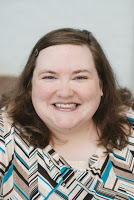 Carrie Schmidt is an avid reader, book reviewer, story addict, KissingBooks fan, book boyfriend collector, and cool aunt. She also loves Jesus and THE Story a whole lot. Co-founder of the Christian Fiction Readers' Retreat and JustRead Publicity Tours, Carrie lives in Kentucky with her husband Eric. She can be found lurking at various blogs and websites (because she can't stop talking about books) but her main home is the blog she started in 2015 - ReadingIsMySuperPower.org. You can also connect with Carrie on Facebook @ meezcarriereads and everywhere else social at @meezcarrie.
Carrie Schmidt is an avid reader, book reviewer, story addict, KissingBooks fan, book boyfriend collector, and cool aunt. She also loves Jesus and THE Story a whole lot. Co-founder of the Christian Fiction Readers' Retreat and JustRead Publicity Tours, Carrie lives in Kentucky with her husband Eric. She can be found lurking at various blogs and websites (because she can't stop talking about books) but her main home is the blog she started in 2015 - ReadingIsMySuperPower.org. You can also connect with Carrie on Facebook @ meezcarriereads and everywhere else social at @meezcarrie.
Published on May 28, 2019 21:00
ALMOST SUMMER!
So for some of you, school has been let out. College graduations are mostly over, some Southern schools are on summer break and others are not far behind.
In the north, we tend to go longer into June, but the warming weather trends and crazy intense storms throughout the Central United States tell us the seasons are changing and possibly at war with one another.
So here's the thing: What does summer or any holiday mean to a self-employed author? Or, and more so, to a self-employed author who also has a day job?
Shifts in scheduling, or no schedule can wreak havoc with your writing. The sun's up later for a lot of you... so are kids.... and the sun's up way earlier than she used to be. Baseball, soccer, dance, theater camps, regular camps, cancer camps, dance camps, day camps, hiking, camping, day-trips...
You get the picture. There is no "normal". There is only the new normal which is not normal at all. So what's an aspiring or even established author to do?
Make a plan.
If you know that you have everyday between 5:00 AM and 7:00 AM to write, get up and do it.
Turn the TV off at night... and social media, too... and go to bed by 10:00. Up at 4:45, coffee in hand, writing at 5:00.
WHAT??? RUTHY ARE YOU NUTS?????
Probably, but that's a different blog post entirely. You can either let the lack of structure beat you back and cost you time and momentum OR... work around it. Examine your schedule weekly. And set the plan for that week. And if it must be changed for the next week, big deal.
Do it.
That's the party-bonus-glory of the self-employed aspect of being a writer. We are our own bosses. We set the pace and make the plan. The downside of that is there is no one else to blame if we tank.
Nope.
Not one soul can take the fall.
It's on us.
Just us.
Not everyone handles that well. Some look around, wanting to cast blame elsewhere.
Nope.
I'm not talking medical emergency, death, divorce kind of blame... that's different.
I'm talkin' the I can't get out of bed in the morning to write or stay up late to write or write while I'm waiting two hours to pick up kids from camp or Grandma from respite...
For the next ten weeks the words "perfect time" and "perfect plan" should go out the window and be replaced by "I work when I can, where I can."
Darlings, it's rough. I know this! I get it, I really do, but if you want this career. If you were born to write...
Gotta do what it takes on a regular basis. No one becomes accidentally successful.
They become successful because they didn't quit.
Join the conversation with a comment on how you handle the craziness of summer and/or holidays and I'm tucking you into a drawing for this wonderful new Love Inspired book, the final book of the "Shepherd's Crossing" series "Healing the Cowboy's Heart"....

A perfect match…or sworn enemies?
Only time will tell at Shepherd’s Crossing.
Horse breeder Isaiah Woods can’t believe his only ally in helping a neglected mare is the descendant of his family’s bitter enemy—veterinarian Charlotte Fitzgerald. Despite the feud, Charlotte risks everything to save the horse. But as she falls for Isaiah—and the orphaned niece and nephew in his care—the mare isn’t the only one who needs saving.
PREORDER HERE, RELEASES ON JUNE 18TH
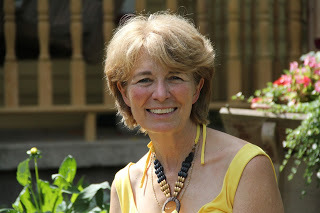 Multi-published, award-winning author Ruth Logan Herne understands the craziness of schedules and lack thereof. She lives on a pumpkin farm in Western New York and from May through October, her real life interferes, clashes with, and tries valiantly to overcome her fictional-loving life but she fools it by getting up early... sneaking in writing time... and pretending to be a juggler. She's pretty sure you can do this, too! Write her at loganherne@gmail.com or follow her on Twitter, visit her website ruthloganherne.com or friend her on facebook... She loves to chat with readers and encourage authors, and with her 50th book just released .... she's got a lot to say!
Multi-published, award-winning author Ruth Logan Herne understands the craziness of schedules and lack thereof. She lives on a pumpkin farm in Western New York and from May through October, her real life interferes, clashes with, and tries valiantly to overcome her fictional-loving life but she fools it by getting up early... sneaking in writing time... and pretending to be a juggler. She's pretty sure you can do this, too! Write her at loganherne@gmail.com or follow her on Twitter, visit her website ruthloganherne.com or friend her on facebook... She loves to chat with readers and encourage authors, and with her 50th book just released .... she's got a lot to say!
In the north, we tend to go longer into June, but the warming weather trends and crazy intense storms throughout the Central United States tell us the seasons are changing and possibly at war with one another.
So here's the thing: What does summer or any holiday mean to a self-employed author? Or, and more so, to a self-employed author who also has a day job?
Shifts in scheduling, or no schedule can wreak havoc with your writing. The sun's up later for a lot of you... so are kids.... and the sun's up way earlier than she used to be. Baseball, soccer, dance, theater camps, regular camps, cancer camps, dance camps, day camps, hiking, camping, day-trips...
You get the picture. There is no "normal". There is only the new normal which is not normal at all. So what's an aspiring or even established author to do?
Make a plan.
If you know that you have everyday between 5:00 AM and 7:00 AM to write, get up and do it.
Turn the TV off at night... and social media, too... and go to bed by 10:00. Up at 4:45, coffee in hand, writing at 5:00.
WHAT??? RUTHY ARE YOU NUTS?????
Probably, but that's a different blog post entirely. You can either let the lack of structure beat you back and cost you time and momentum OR... work around it. Examine your schedule weekly. And set the plan for that week. And if it must be changed for the next week, big deal.
Do it.
That's the party-bonus-glory of the self-employed aspect of being a writer. We are our own bosses. We set the pace and make the plan. The downside of that is there is no one else to blame if we tank.
Nope.
Not one soul can take the fall.
It's on us.
Just us.
Not everyone handles that well. Some look around, wanting to cast blame elsewhere.
Nope.
I'm not talking medical emergency, death, divorce kind of blame... that's different.
I'm talkin' the I can't get out of bed in the morning to write or stay up late to write or write while I'm waiting two hours to pick up kids from camp or Grandma from respite...
For the next ten weeks the words "perfect time" and "perfect plan" should go out the window and be replaced by "I work when I can, where I can."
Darlings, it's rough. I know this! I get it, I really do, but if you want this career. If you were born to write...
Gotta do what it takes on a regular basis. No one becomes accidentally successful.
They become successful because they didn't quit.
Join the conversation with a comment on how you handle the craziness of summer and/or holidays and I'm tucking you into a drawing for this wonderful new Love Inspired book, the final book of the "Shepherd's Crossing" series "Healing the Cowboy's Heart"....

A perfect match…or sworn enemies?
Only time will tell at Shepherd’s Crossing.
Horse breeder Isaiah Woods can’t believe his only ally in helping a neglected mare is the descendant of his family’s bitter enemy—veterinarian Charlotte Fitzgerald. Despite the feud, Charlotte risks everything to save the horse. But as she falls for Isaiah—and the orphaned niece and nephew in his care—the mare isn’t the only one who needs saving.
PREORDER HERE, RELEASES ON JUNE 18TH
 Multi-published, award-winning author Ruth Logan Herne understands the craziness of schedules and lack thereof. She lives on a pumpkin farm in Western New York and from May through October, her real life interferes, clashes with, and tries valiantly to overcome her fictional-loving life but she fools it by getting up early... sneaking in writing time... and pretending to be a juggler. She's pretty sure you can do this, too! Write her at loganherne@gmail.com or follow her on Twitter, visit her website ruthloganherne.com or friend her on facebook... She loves to chat with readers and encourage authors, and with her 50th book just released .... she's got a lot to say!
Multi-published, award-winning author Ruth Logan Herne understands the craziness of schedules and lack thereof. She lives on a pumpkin farm in Western New York and from May through October, her real life interferes, clashes with, and tries valiantly to overcome her fictional-loving life but she fools it by getting up early... sneaking in writing time... and pretending to be a juggler. She's pretty sure you can do this, too! Write her at loganherne@gmail.com or follow her on Twitter, visit her website ruthloganherne.com or friend her on facebook... She loves to chat with readers and encourage authors, and with her 50th book just released .... she's got a lot to say!
Published on May 28, 2019 02:27
May 26, 2019
Seekerville is Closed Today

Seekerville is closed today for the U.S. Memorial Day, a day we pause to remember those who made the ultimate sacrifice for freedom, both here and abroad.
Please join us again soon!
Published on May 26, 2019 21:05
May 24, 2019
Weekend Edition

If you are not familiar with our giveaway rules, take a minute to read them here. It keeps us all happy! All winners should send their name, address, and phone number to claim prizes. Note our new email address and please send your emails to Seekerville2@gmail.com

Monday: Guest blogger, Suzanne Woods Fisher shared Six Things I Learned from an Island in Maine. The winner of a paperback or ebook of On A Summer Tide is Amy Anguish!
Wednesday: Jan Drexler brought us a blast from the past as she revisited Having Fun with Revisions!
Friday: Pam Hillman was our host yesterday encouraging us to weave a bit of fact with our fiction, or fiction with our facts. Hey, either works!

Monday: Seekerville is closed for the Memorial Day holiday. Enjoy!
Wednesday: Carrie will share Interview Do's and Don'ts Friday: Come join our guest bloggers Louise Gouge and Laurie Kingery as they share A New Twist on an Old Setting.

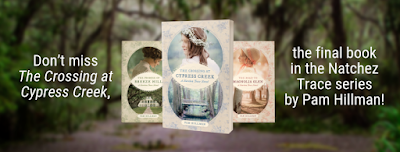 All three ebooks in Pam Hillman's
All three ebooks in Pam Hillman'sNatchez Trace Novel series are on sale during May!
Links to each where you can select your favorite retailer:
The Promise of Breeze Hill - $1.99
The Road to Magnolia Glen - $5.99
The Crossing at Cypress Creek $4.99
 The fourth installment of Mindy Obenhaus's Rocky Mountain Heroes series, Reunited in the Rockies, is now available for preorder.
The fourth installment of Mindy Obenhaus's Rocky Mountain Heroes series, Reunited in the Rockies, is now available for preorder.A fresh start…and an old love reignited?
A Rocky Mountain Heroes romance
For widow Kayla Bradshaw, restoring a historic Colorado hotel means a better life for her and her soon-to-arrive baby. But she needs construction help from Jude Stephens, the love she lost through a misunderstanding. Working with Kayla, the police officer finds himself forgiving her—and longing to rebuild her shattered confidence. But can they trust each other enough to forge a future together?

Branding 101: Defining Our Brand by Jamie Gold
Writers Beware of the Legal Pitfalls - Copyright Basics Pt. 3 by Karen Van Den Heuvel at Thyme For Writers
20 of the Most Instructive Quotes Abo Writing by K.M. Weiland at Helping Writers Become Authors
Showing Your Scenes Through Your Characters' Senses by C.S. Lakin at Live Write Thrive
Real vs. Fictitious Settings by Mindy Obenhaus
5 Ways to Hook Your Readers by Janice Hardy at Fiction University
Fiction Writing Contests Worth Your Time in Summer 2019 by Arthur Klepchukov at Writer Unboxed
Recent Changes and Updates in Writing Style Guides by Lori Hatcher at The Write Conversation with Edie Melson
Published on May 24, 2019 21:00
May 23, 2019
Building a Story World: Part Fact, Part Fiction
p.p1 {margin: 0.0px 0.0px 0.0px 0.0px; font: 14.0px Cochin} p.p2 {margin: 0.0px 0.0px 0.0px 0.0px; font: 14.0px Cochin; min-height: 17.0px}
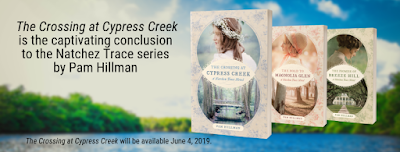
by Pam Hillman
Creating a story world is like being captivated by a stranger’s face through a rain-soaked window, or traveling through an unfamiliar countryside blanketed in heavy fog. There’s a hint of what’s on the other side of the glass or the haze, but you can’t see everything clearly. But because of that very thing, your imagination is given the freedom to paint the picture you most want to see in your mind.
If you could wipe the glass clean or burn away the fog, you might discover that the story world in question is part fact, part fiction.
This is true of the story world I created for my Natchez Trace Novel series set in the 1790s. Each story begins in Natchez-Under-the-Hill, a real place that dates back to the 1730s, touching on some of the aspects of the seedy wharf and making reference to actual streets that were laid out at the time of my series. Manuel Gayoso de Lemos, governor of the Natchez District, his future wife, Elizabeth Watts, and his secretary, Stephen Minor, make cameo appearances.
My characters travel along the Natchez Trace, stopping at a tavern called Harper’s Inn. This particular inn is fictional as I wanted it to be a very rough establishment and didn’t want to “cast aspersions” on any real establishment from the period. Mount Locust, on the other hand, which was a very respectable inn and is still standing to give visitors a look at what inns (also referred to as stands) of the day consisted of, is also mentioned multiple times throughout the series, giving anyone familiar with the area a yardstick by which to gauge where my characters are as they travel back and forth along the trace.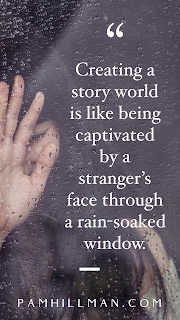
Breeze Hill Plantation, Magnolia Glen Plantation, and Cypress Creek are all fictional, but if pressed, I could take you twenty miles north of Natchez along the old trace, find a hill surrounded by rolling countryside, and claim it as the spot where Breeze Hill would have stood. The plantation home itself is based loosely on the floor plan and design of Linden Hall, part of which was constructed in 1785 and is located in Natchez proper to this day operating as Linden Hall B&B. Most of the other plantations, homes, and businesses sprinkled throughout the series are fictional.
Travel a few miles east of there and we’d find Magnolia Glen. Due west in the tract of land between the Natchez Trace and the Mississippi River and you’d find the virgin forest that Caleb O’Shea and his brothers logged in The Crossing at Cypress Creek, along with the rough-and-tumble little river town dubbed Cypress Creek.
So, we have a little bit of fact and a little bit of fiction.
Why use a real location at all? Readers are anchored in the story when an author uses a real town, country, or geographical location that they are vaguely familiar with to set the stage. It might be as broad as “the Mojave Desert,” or “London, 1845”. The exception, of course, is science fiction where the story world is created entirely from the author’s imagination.
With the reader anchored solidly in fact, the author can then add in a fictional ghost town or fort at the edge of the desert, a small millinery tucked on an unnamed side-street in London, an entire plantation along the Natchez Trace in 1791, and a river town along the Mississippi River in 1792.
 All three ebooks in Pam's
All three ebooks in Pam's
Natchez Trace Novel series are on sale during May!
Links to each where you can select your favorite retailer:
The Promise of Breeze Hill - $1.99
The Road to Magnolia Glen - $5.99
The Crossing at Cypress Creek $4.99
 CBA Bestselling author PAM HILLMAN was born and raised on a dairy farm in Mississippi and spent her teenage years perched on the seat of a tractor raking hay. In those days, her daddy couldn't afford two cab tractors with air conditioning and a radio, so Pam drove an Allis Chalmers 110. Even when her daddy asked her if she wanted to bale hay, she told him she didn't mind raking. Raking hay doesn't take much thought so Pam spent her time working on her tan and making up stories in her head. Now, that's the kind of life every girl should dream of. www.pamhillman.com
CBA Bestselling author PAM HILLMAN was born and raised on a dairy farm in Mississippi and spent her teenage years perched on the seat of a tractor raking hay. In those days, her daddy couldn't afford two cab tractors with air conditioning and a radio, so Pam drove an Allis Chalmers 110. Even when her daddy asked her if she wanted to bale hay, she told him she didn't mind raking. Raking hay doesn't take much thought so Pam spent her time working on her tan and making up stories in her head. Now, that's the kind of life every girl should dream of. www.pamhillman.com
p.p1 {margin: 0.0px 0.0px 0.0px 0.0px; font: 12.0px Cambria} span.s1 {text-decoration: underline ; color: #0433ff}

by Pam Hillman
Creating a story world is like being captivated by a stranger’s face through a rain-soaked window, or traveling through an unfamiliar countryside blanketed in heavy fog. There’s a hint of what’s on the other side of the glass or the haze, but you can’t see everything clearly. But because of that very thing, your imagination is given the freedom to paint the picture you most want to see in your mind.
If you could wipe the glass clean or burn away the fog, you might discover that the story world in question is part fact, part fiction.
This is true of the story world I created for my Natchez Trace Novel series set in the 1790s. Each story begins in Natchez-Under-the-Hill, a real place that dates back to the 1730s, touching on some of the aspects of the seedy wharf and making reference to actual streets that were laid out at the time of my series. Manuel Gayoso de Lemos, governor of the Natchez District, his future wife, Elizabeth Watts, and his secretary, Stephen Minor, make cameo appearances.
My characters travel along the Natchez Trace, stopping at a tavern called Harper’s Inn. This particular inn is fictional as I wanted it to be a very rough establishment and didn’t want to “cast aspersions” on any real establishment from the period. Mount Locust, on the other hand, which was a very respectable inn and is still standing to give visitors a look at what inns (also referred to as stands) of the day consisted of, is also mentioned multiple times throughout the series, giving anyone familiar with the area a yardstick by which to gauge where my characters are as they travel back and forth along the trace.

Breeze Hill Plantation, Magnolia Glen Plantation, and Cypress Creek are all fictional, but if pressed, I could take you twenty miles north of Natchez along the old trace, find a hill surrounded by rolling countryside, and claim it as the spot where Breeze Hill would have stood. The plantation home itself is based loosely on the floor plan and design of Linden Hall, part of which was constructed in 1785 and is located in Natchez proper to this day operating as Linden Hall B&B. Most of the other plantations, homes, and businesses sprinkled throughout the series are fictional.
Travel a few miles east of there and we’d find Magnolia Glen. Due west in the tract of land between the Natchez Trace and the Mississippi River and you’d find the virgin forest that Caleb O’Shea and his brothers logged in The Crossing at Cypress Creek, along with the rough-and-tumble little river town dubbed Cypress Creek.
So, we have a little bit of fact and a little bit of fiction.
Why use a real location at all? Readers are anchored in the story when an author uses a real town, country, or geographical location that they are vaguely familiar with to set the stage. It might be as broad as “the Mojave Desert,” or “London, 1845”. The exception, of course, is science fiction where the story world is created entirely from the author’s imagination.
With the reader anchored solidly in fact, the author can then add in a fictional ghost town or fort at the edge of the desert, a small millinery tucked on an unnamed side-street in London, an entire plantation along the Natchez Trace in 1791, and a river town along the Mississippi River in 1792.
 All three ebooks in Pam's
All three ebooks in Pam'sNatchez Trace Novel series are on sale during May!
Links to each where you can select your favorite retailer:
The Promise of Breeze Hill - $1.99
The Road to Magnolia Glen - $5.99
The Crossing at Cypress Creek $4.99
 CBA Bestselling author PAM HILLMAN was born and raised on a dairy farm in Mississippi and spent her teenage years perched on the seat of a tractor raking hay. In those days, her daddy couldn't afford two cab tractors with air conditioning and a radio, so Pam drove an Allis Chalmers 110. Even when her daddy asked her if she wanted to bale hay, she told him she didn't mind raking. Raking hay doesn't take much thought so Pam spent her time working on her tan and making up stories in her head. Now, that's the kind of life every girl should dream of. www.pamhillman.com
CBA Bestselling author PAM HILLMAN was born and raised on a dairy farm in Mississippi and spent her teenage years perched on the seat of a tractor raking hay. In those days, her daddy couldn't afford two cab tractors with air conditioning and a radio, so Pam drove an Allis Chalmers 110. Even when her daddy asked her if she wanted to bale hay, she told him she didn't mind raking. Raking hay doesn't take much thought so Pam spent her time working on her tan and making up stories in her head. Now, that's the kind of life every girl should dream of. www.pamhillman.comp.p1 {margin: 0.0px 0.0px 0.0px 0.0px; font: 12.0px Cambria} span.s1 {text-decoration: underline ; color: #0433ff}
Published on May 23, 2019 21:00
May 22, 2019
Having Fun With Revisions - Digging into the Seekerville Archives
The Seekerville archives are full of wonderful blog posts. I'm sharing this one from 2016 as a taste of what you can find there.
How do you find the archives? Look at the top of the page...see the button? You've got it!
Now, a trip into the past...
* * * * * *
by Jan Drexler
We all know the feeling.
You wake up early, refreshed and ready to head into the next scene of your Work In Progress. You grab your caffeine of choice (mine happens to be tea) and sit down in front of your computer.
Everything is fine until about an hour later. You read through what you’ve written and you’re ready to tear your hair out! What happened to those beautiful words that flowed through your mind during your shower? Why are your characters so…so…cardboard? Yes, cardboard!
You bang your forehead on your keyboard, sobbing. “I’ll never be a real writer!!!”
Okay, maybe I’m being a little melodramatic. Or maybe not. First drafts are – yes, we can say it – awful. But that’s okay! Look at that scene again….
I wrote 700 words this morning. It was the beginning of a scene for my next Love Inspired book that I had labeled “action leading to Twist 1.”
The problem?
Here, let me give you a sample:
“blah blah blah pigs blah blah blah mud blah blah blah father blah blah blah money…”
Do you see what I see? No action! No movement – unless you count the pigs wallowing in the mud (and I don’t). It’s just my hero, Samuel, and the pigs. There isn’t even any dialogue.
Seven hundred words of boredom. Blah blah blah.
Unless you like pigs.
But I’m not giving up. The first draft – no matter how horrible it might be – is necessary. I’ve dumped what I want the scene to look like onto my computer screen. I’ve given my ideas shape. There is something there…which is much better than nothing.
I can’t revise words I haven’t written, and revising is what makes the writing sing.

So how do I fix this scene?
First of all, the biggest problem is that Samuel is alone. The whole scene is introspection, with a few buckets of pig slops thrown in.
When our characters are alone, nothing happens. Think of the last time you had a moment to yourself and write it out as if it’s a scene in your book.
Jan swished the tea bag in the cup of hot water, hoping that would make it brew faster. She flipped the newspaper open with one hand and read the headline. “Mayor Urges More Spending on City Center.”
Exciting, right? Unless someone walks into the kitchen at that moment and starts a conversation. Then we have some spark. Some interest.
There is a time for our characters to be by themselves, deep in introspection, but this scene isn’t it. Remember that this is an action scene. And it’s a lead-in scene.
What is it leading into? The first plot twist. So in order to write the lead-in, I need to know where I’m going.
What is the plot twist? I have that planned already – Samuel tells the heroine, Mary, that she should stop worrying about money. “Find some fellow to marry and let him worry about it.”
Yeah. Right. She responds to that suggestion about as well as you think.
So now I know what I need to do to fix this scene. Since Mary is going to be key in the next scene, I need to bring her in here. Something she says or does will prompt Samuel to make that suggestion in the next scene that sends her off.
So instead of introspection, I need dialogue between Samuel and Mary. They can talk about the pigs, the mud, and his father. But they need to talk to each other.
Okay, I can hear some of you already: “Plot twist?” “Lead-in?” “Action scene?” What is she talking about?

It’s time for a quick lesson in scene building 101. This is not a rabbit trail, I promise! I’ll come back to revisions in a minute.
How to build a scene:
1. Give it a purpose. Scenes aren’t just fluff and filler. Each scene has a role to play to move your story forward from the beginning, through the middle and on to the end. You, as the author, need to know what each scene’s purpose is. That will help you determine how the scene will play out.
2. Give it a beginning, middle and an end. Think of each scene as a mini-story within your book. Start by showing your reader who is in the scene, where they are and what they’re doing. Ramp up some tension that’s appropriate for this scene’s purpose. And then end with a hook…make your reader go on to the next scene with no thought of putting your book down.
3. Give it a main character. Each scene needs to have a main POV character, and your job is to show the scene through the character who is best able to convey the message of the scene to your reader.

Now back to revising my scene’s first draft. As I revise, I need to keep asking myself those all-important questions.
Another point to consider as I revise this scene is balance.

I tend to write scenes with a word count between 1200 and 1500 words. In my novels for Revell, the scenes tend to be longer, around 2200 words. Why is this an important detail to know? Because I want to build my scenes in proportions the same way I do my novel.
Most novels are in three acts, with Act One in the first 25% of the book, Act Two in the next 50%, and Act Three in the remaining 25%. I want my scenes to have that same kind of proportion.
So my balanced scene would be around 300 words for the beginning, 600 words for the middle, and 300 words for the end. Do you see the symmetry?

Okay. We have our three building blocks and our scene is balanced. How does it look now?
In the first 25%, I describe the physical setting: Samuel is in the barn feeding his pigs, the morning is pleasant, and he is happy to see Mary stop by the farm.
In the middle 50% of the scene, we have the conversation between Samuel and Mary.
They talk about the pigs, his farm, and her idea to raise money to support herself, her sister and their elderly aunt.
Then in the final 25%, we see Samuel’s reaction to the conversation and his lack of understanding of why Mary feels the need to support herself. She should just find a husband, right?
And the groundwork is laid for the next scene.

I have an assignment for you. Don’t worry, it’s a fun one!
Find your favorite book and read it again. This time, pay attention to the scenes as they unfold. Do they have the three building blocks of a good scene? Do they end with a hook?
Now, what can you do to make your writing sing like that?
* * * * *
Back to the present!
I would apologize for the winter graphics, but we're on the downward side of a late winter storm here in the Black Hills. Lots of wet, wet snow! So I get to share it with you!
Let's discuss scene-building. What is your favorite technique? Or do you "wing-it," working through it until it feels right?
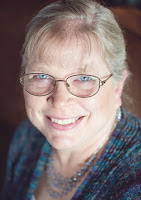 Jan Drexler’s ancestors were among the first Amish immigrants in the 1700s, and their experiences are the inspiration for her stories. Jan lives in the Black Hills of South Dakota with her husband and growing extended family. She writes historical Amish fiction and is published by Revell and Love Inspired.
Jan Drexler’s ancestors were among the first Amish immigrants in the 1700s, and their experiences are the inspiration for her stories. Jan lives in the Black Hills of South Dakota with her husband and growing extended family. She writes historical Amish fiction and is published by Revell and Love Inspired.
Website: www.JanDrexler.comSeekerville!: www.seekerville.blogspot.comFun blog: yankeebellecafe.blogspot.comTwitter: @JanDrexlerFacebook: Jan Drexler, Author
How do you find the archives? Look at the top of the page...see the button? You've got it!
Now, a trip into the past...
* * * * * *
by Jan Drexler
We all know the feeling.
You wake up early, refreshed and ready to head into the next scene of your Work In Progress. You grab your caffeine of choice (mine happens to be tea) and sit down in front of your computer.
Everything is fine until about an hour later. You read through what you’ve written and you’re ready to tear your hair out! What happened to those beautiful words that flowed through your mind during your shower? Why are your characters so…so…cardboard? Yes, cardboard!
You bang your forehead on your keyboard, sobbing. “I’ll never be a real writer!!!”
Okay, maybe I’m being a little melodramatic. Or maybe not. First drafts are – yes, we can say it – awful. But that’s okay! Look at that scene again….
I wrote 700 words this morning. It was the beginning of a scene for my next Love Inspired book that I had labeled “action leading to Twist 1.”
The problem?
Here, let me give you a sample:
“blah blah blah pigs blah blah blah mud blah blah blah father blah blah blah money…”
Do you see what I see? No action! No movement – unless you count the pigs wallowing in the mud (and I don’t). It’s just my hero, Samuel, and the pigs. There isn’t even any dialogue.
Seven hundred words of boredom. Blah blah blah.
Unless you like pigs.
But I’m not giving up. The first draft – no matter how horrible it might be – is necessary. I’ve dumped what I want the scene to look like onto my computer screen. I’ve given my ideas shape. There is something there…which is much better than nothing.
I can’t revise words I haven’t written, and revising is what makes the writing sing.

So how do I fix this scene?
First of all, the biggest problem is that Samuel is alone. The whole scene is introspection, with a few buckets of pig slops thrown in.
When our characters are alone, nothing happens. Think of the last time you had a moment to yourself and write it out as if it’s a scene in your book.
Jan swished the tea bag in the cup of hot water, hoping that would make it brew faster. She flipped the newspaper open with one hand and read the headline. “Mayor Urges More Spending on City Center.”
Exciting, right? Unless someone walks into the kitchen at that moment and starts a conversation. Then we have some spark. Some interest.
There is a time for our characters to be by themselves, deep in introspection, but this scene isn’t it. Remember that this is an action scene. And it’s a lead-in scene.
What is it leading into? The first plot twist. So in order to write the lead-in, I need to know where I’m going.
What is the plot twist? I have that planned already – Samuel tells the heroine, Mary, that she should stop worrying about money. “Find some fellow to marry and let him worry about it.”
Yeah. Right. She responds to that suggestion about as well as you think.
So now I know what I need to do to fix this scene. Since Mary is going to be key in the next scene, I need to bring her in here. Something she says or does will prompt Samuel to make that suggestion in the next scene that sends her off.
So instead of introspection, I need dialogue between Samuel and Mary. They can talk about the pigs, the mud, and his father. But they need to talk to each other.
Okay, I can hear some of you already: “Plot twist?” “Lead-in?” “Action scene?” What is she talking about?

It’s time for a quick lesson in scene building 101. This is not a rabbit trail, I promise! I’ll come back to revisions in a minute.
How to build a scene:
1. Give it a purpose. Scenes aren’t just fluff and filler. Each scene has a role to play to move your story forward from the beginning, through the middle and on to the end. You, as the author, need to know what each scene’s purpose is. That will help you determine how the scene will play out.
2. Give it a beginning, middle and an end. Think of each scene as a mini-story within your book. Start by showing your reader who is in the scene, where they are and what they’re doing. Ramp up some tension that’s appropriate for this scene’s purpose. And then end with a hook…make your reader go on to the next scene with no thought of putting your book down.
3. Give it a main character. Each scene needs to have a main POV character, and your job is to show the scene through the character who is best able to convey the message of the scene to your reader.

Now back to revising my scene’s first draft. As I revise, I need to keep asking myself those all-important questions.
Another point to consider as I revise this scene is balance.

I tend to write scenes with a word count between 1200 and 1500 words. In my novels for Revell, the scenes tend to be longer, around 2200 words. Why is this an important detail to know? Because I want to build my scenes in proportions the same way I do my novel.
Most novels are in three acts, with Act One in the first 25% of the book, Act Two in the next 50%, and Act Three in the remaining 25%. I want my scenes to have that same kind of proportion.
So my balanced scene would be around 300 words for the beginning, 600 words for the middle, and 300 words for the end. Do you see the symmetry?

Okay. We have our three building blocks and our scene is balanced. How does it look now?
In the first 25%, I describe the physical setting: Samuel is in the barn feeding his pigs, the morning is pleasant, and he is happy to see Mary stop by the farm.
In the middle 50% of the scene, we have the conversation between Samuel and Mary.
They talk about the pigs, his farm, and her idea to raise money to support herself, her sister and their elderly aunt.
Then in the final 25%, we see Samuel’s reaction to the conversation and his lack of understanding of why Mary feels the need to support herself. She should just find a husband, right?
And the groundwork is laid for the next scene.

I have an assignment for you. Don’t worry, it’s a fun one!
Find your favorite book and read it again. This time, pay attention to the scenes as they unfold. Do they have the three building blocks of a good scene? Do they end with a hook?
Now, what can you do to make your writing sing like that?
* * * * *
Back to the present!
I would apologize for the winter graphics, but we're on the downward side of a late winter storm here in the Black Hills. Lots of wet, wet snow! So I get to share it with you!
Let's discuss scene-building. What is your favorite technique? Or do you "wing-it," working through it until it feels right?
 Jan Drexler’s ancestors were among the first Amish immigrants in the 1700s, and their experiences are the inspiration for her stories. Jan lives in the Black Hills of South Dakota with her husband and growing extended family. She writes historical Amish fiction and is published by Revell and Love Inspired.
Jan Drexler’s ancestors were among the first Amish immigrants in the 1700s, and their experiences are the inspiration for her stories. Jan lives in the Black Hills of South Dakota with her husband and growing extended family. She writes historical Amish fiction and is published by Revell and Love Inspired. Website: www.JanDrexler.comSeekerville!: www.seekerville.blogspot.comFun blog: yankeebellecafe.blogspot.comTwitter: @JanDrexlerFacebook: Jan Drexler, Author
Published on May 22, 2019 10:32



